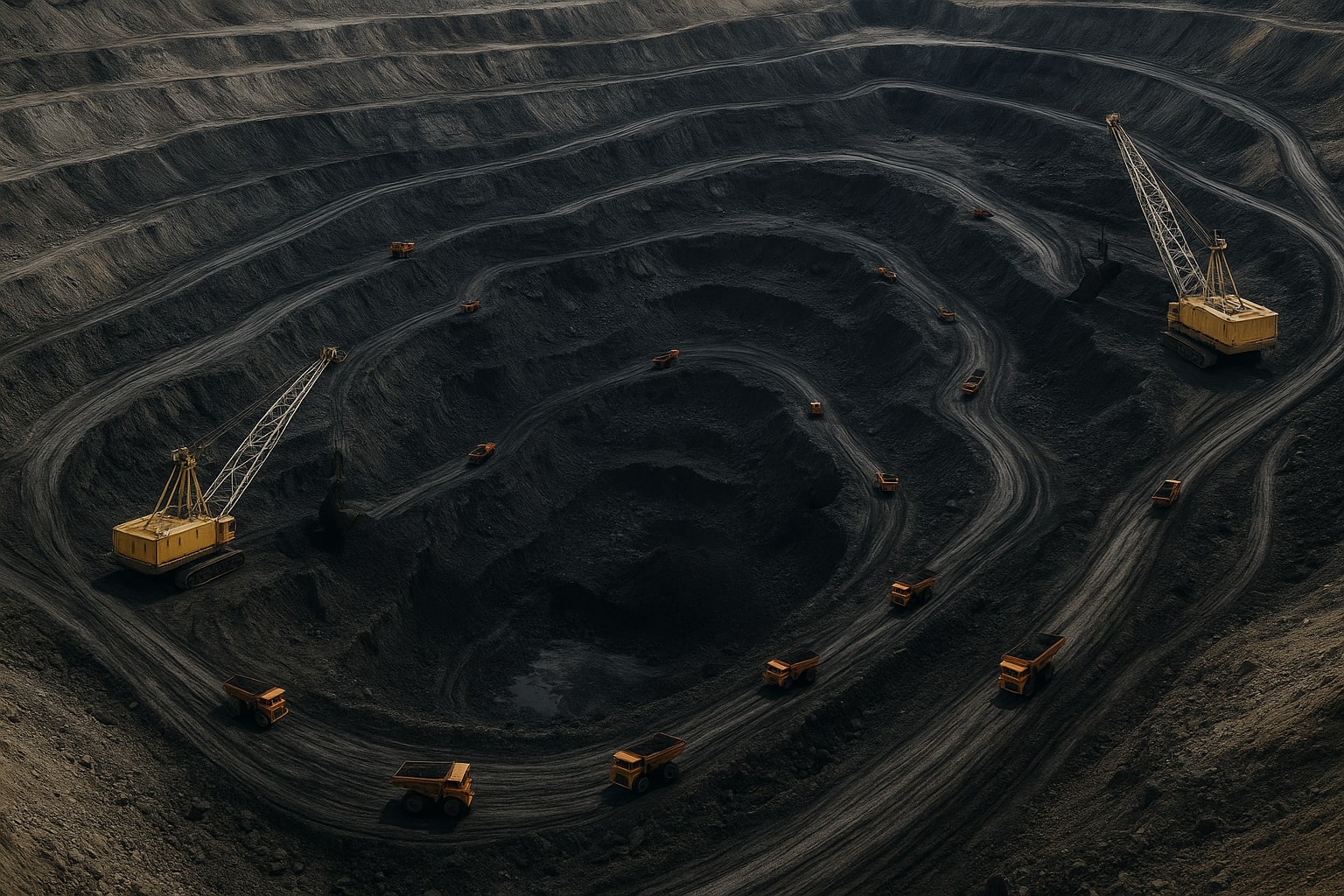Thermal Coal Benchmarks Tighten Grip on Export Dynamics (QCL=F)
The price of the QCL=F Continuous Contract #1 hovered near $125.00 per metric ton today, reflecting a 3.3 percent pullback from March’s $129.20 peak as traders weigh the impact of fresh export controls and shifting Asian demand. Volume at ICE futures spiked 22 percent in the past week, pointing to renewed hedging activity among power generators and steelmakers fearful of further policy shocks. With Indonesia’s new Harga Batubara Acuan (HBA) now set at $124.24, a hefty $19.24 premium to Australian Newcastle futures priced at $105, market participants are caught between government-mandated floors and traditional index benchmarks, intensifying uncertainty around QCL=F’s near-term trajectory.
Indonesia’s HBA Framework Meets Reluctant Buyers
Jakarta’s move to enforce the HBA for spot exports on March 1 was designed to bolster fiscal receipts and rein in domestic price volatility, but China—Indonesia’s largest coal customer—has largely ignored the new benchmark. Chinese utilities continue to rely on the Indonesian Coal Index (ICI), citing opaque methodology and lumpy bi-monthly resets for the HBA. The divergence has left 78 percent of March cargoes priced to ICI levels, with only 22 percent matched to the HBA, exposing exporters to widening spreads and eroding investor confidence. As China’s thermal coal imports fell 6 percent year-on-year in March, Indonesia’s shipments slid 9 percent, underscoring the risks of policy-driven price floors in a demand-softening environment.
Whitehaven Coal’s Q3 FY2025 Surge and Financial Turnaround
Whitehaven Coal Ltd (ASX: WHC) delivered 9.2 million tonnes of managed production in Q3, with equity sales of 6.3 million tonnes, lifting its stock 4.74 percent to close at AUD $5.08. The miner flipped from a $1 billion net debt to a $300 million net cash position following its Blackwater joint-venture inflows and a $500 million deferred payment reduction. Metallurgical coal made up 61 percent of the revenue mix, achieving average realized prices of AUD $2.21 per tonne, while thermal sales held firm at AUD $1.82. Whitehaven’s guidance for FY 2025 remains intact, with mining rents and unit costs anchored at the lower end of its target band. InvestingPro assigns a FAIR financial health score, underpinned by robust free-cash flow projections of AUD $0.70 per share for the year.
Asia-Pacific Consumption and Production Set for Steady Growth
Coal consumption across Asia-Pacific reached 6,869 million tonnes in 2024, up 4 percent year-on-year, and is forecast to hit 7,677 million tonnes by 2035 at a 1.0 percent CAGR. China drove the region with 4,589 million tonnes, while India’s demand climbed to 1,032 million tonnes, growing at 2.7 percent annually since 2013. Production totaled 6,322 million tonnes last year, led by China’s 4,053 million tonnes, with Indonesia and India contributing 856 million and 778 million tonnes, respectively. Thermal coal imports rose to 1,287 million tonnes, valued at $167.6 billion, up 3.8 percent, as Vietnam (+30.2 percent CAGR) and the Philippines (+12.4 percent) sharply boosted purchases. Despite this, export volumes slipped to 741 million tonnes, down 17.9 percent, as Australia and Indonesia—the two largest suppliers—grappled with weaker cyclical demand.
India’s Coal Import Surge Spurs Renewable Imperative
Between 2013 and 2023, India’s thermal coal imports rocketed by 58 percent in volume and 124 percent in value as the rupee weakened and global prices fluctuated. The April–June 2024 peak summer demand saw 2.65 million tonnes of extra imports monthly, prompting the Climate Risk Horizons think tank to call for 33 GW of new renewable capacity to replace coal use during peak periods. Projecting a 50 GW annual addition through 2030 could eliminate thermal coal imports entirely by 2029, saving roughly ₹5.67 lakh crore in foreign exchange from 2025–2029 and up to ₹13.9 lakh crore by 2034. With domestic solar cell capacity set to reach 80 GW by 2026, India stands ready to trade continuous coal imports for a one-time import of solar modules that yield power for decades.
Market Verdict: Hold Coal Exposures Amid Policy Crosswinds
With Indonesia’s HBA struggle, China’s cooling demand, India’s renewable pivot and Whitehaven’s financial rebound, the QCL=F contract appears tethered to conflicting forces. Technicals show price consolidating around the 100-hourly SMA near $125.00, while volume expansion hints at distribution ahead of further data. Given the layered uncertainties—from policy resistance and currency swings to renewable headwinds—maintaining existing coal positions without additional exposure (Hold) aligns with preserving capital until supply-demand clarity emerges. Thompson Reuters, InvestingPro, Climate Risk Horizons, ICE and national statistics.




















